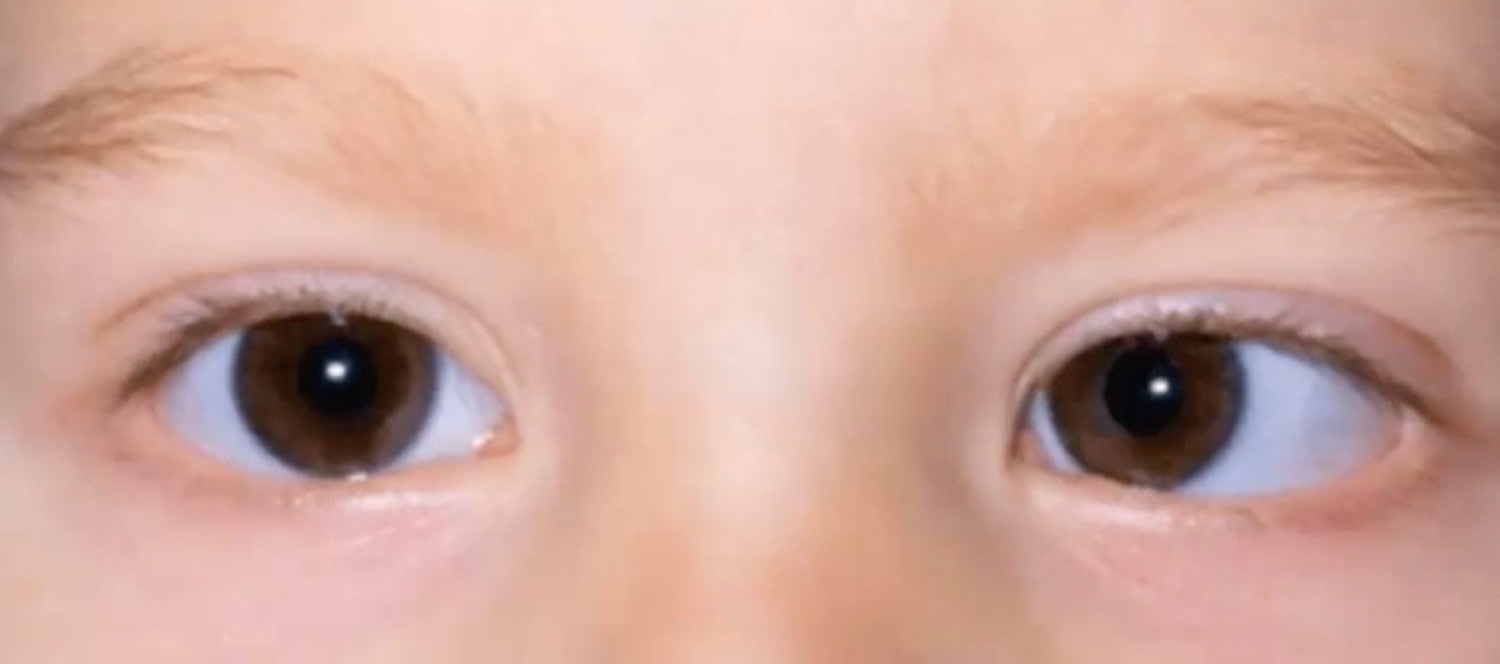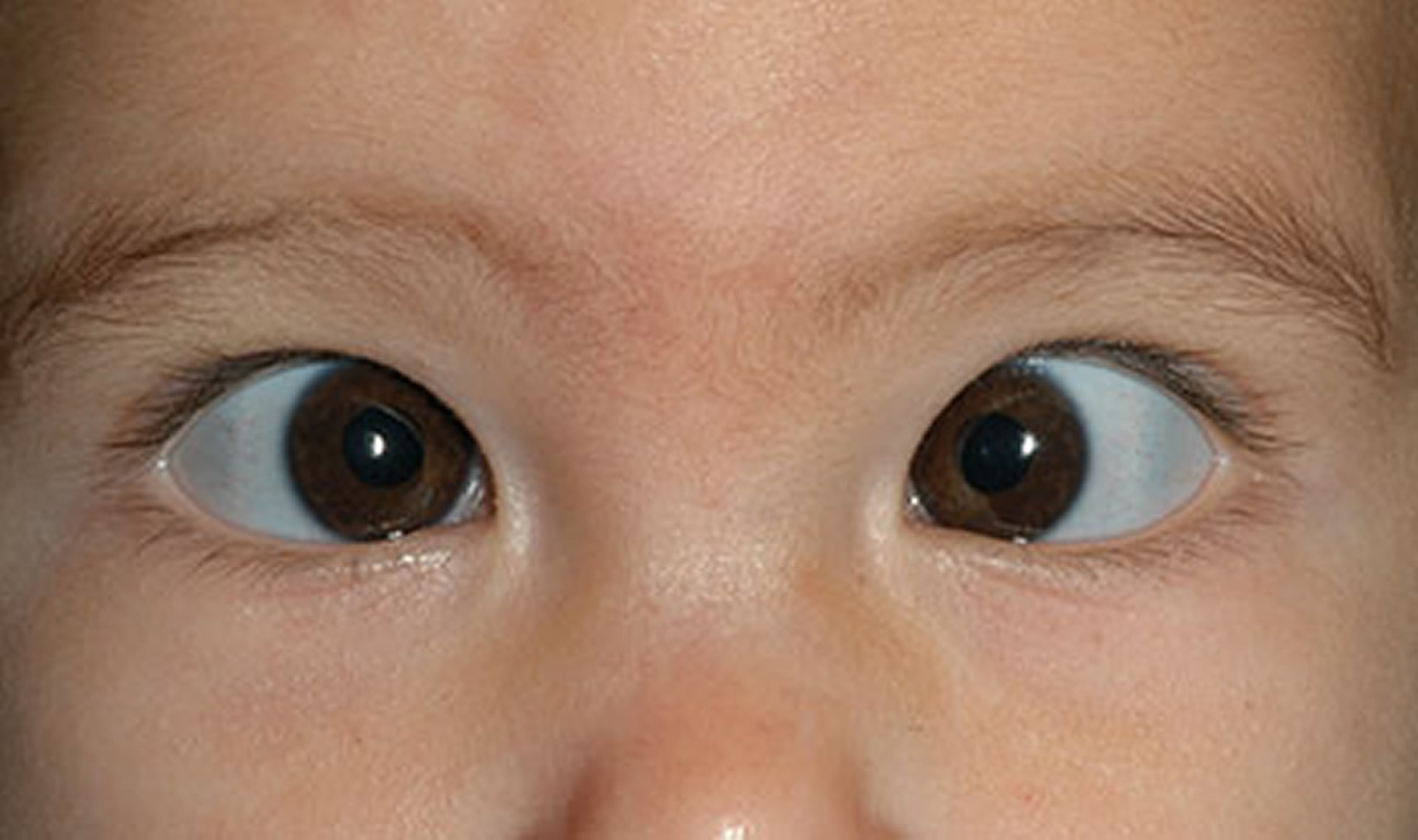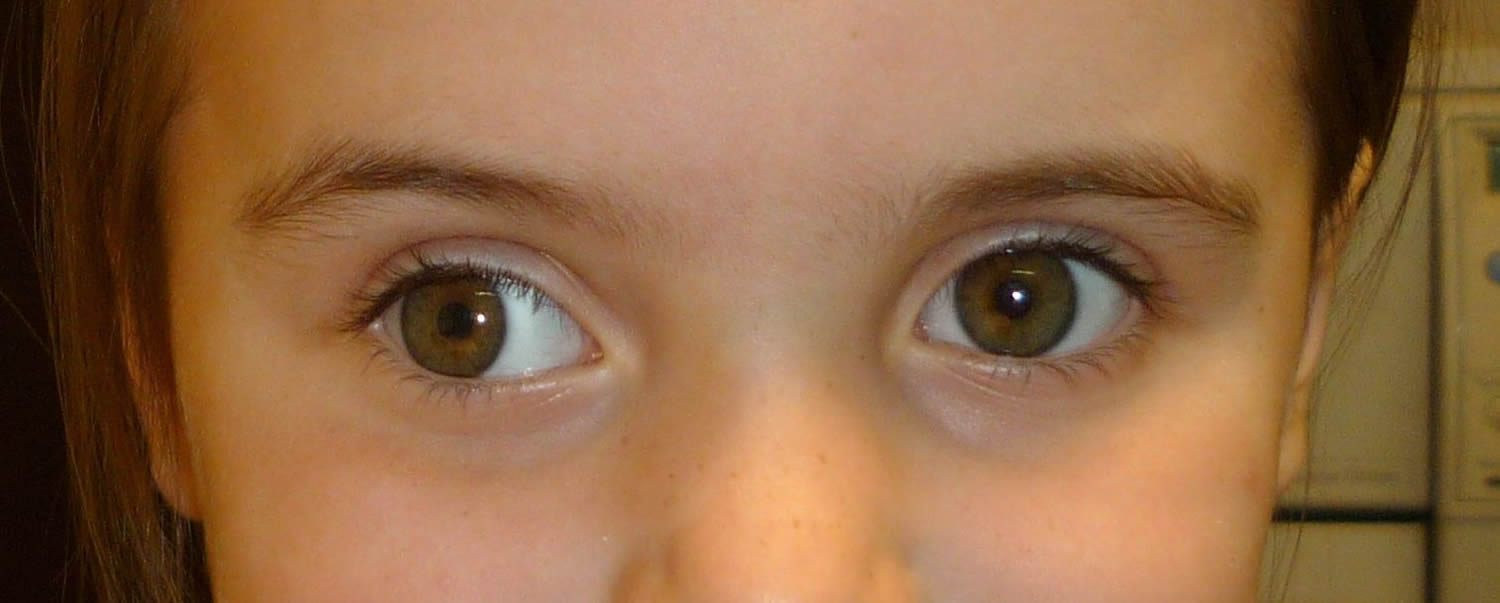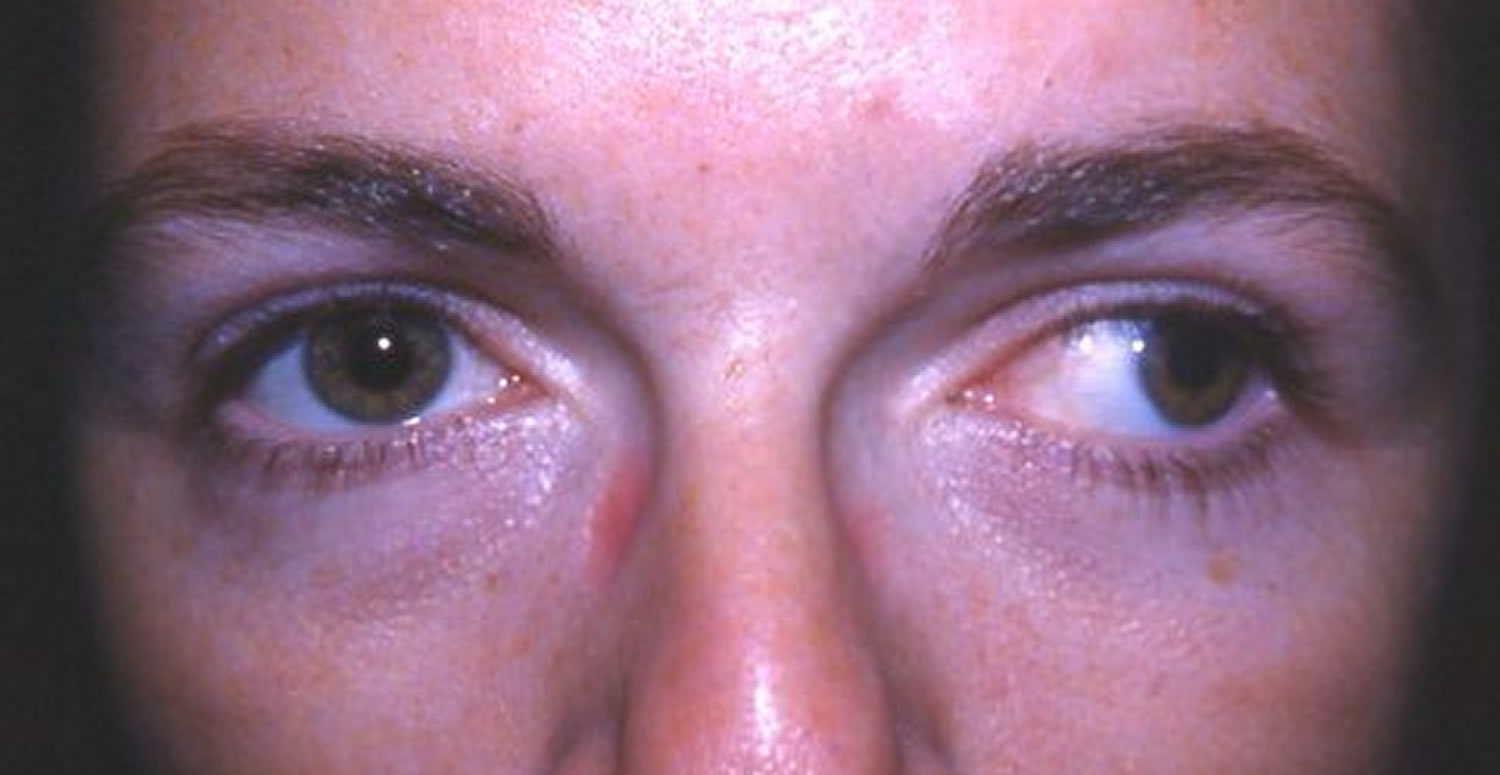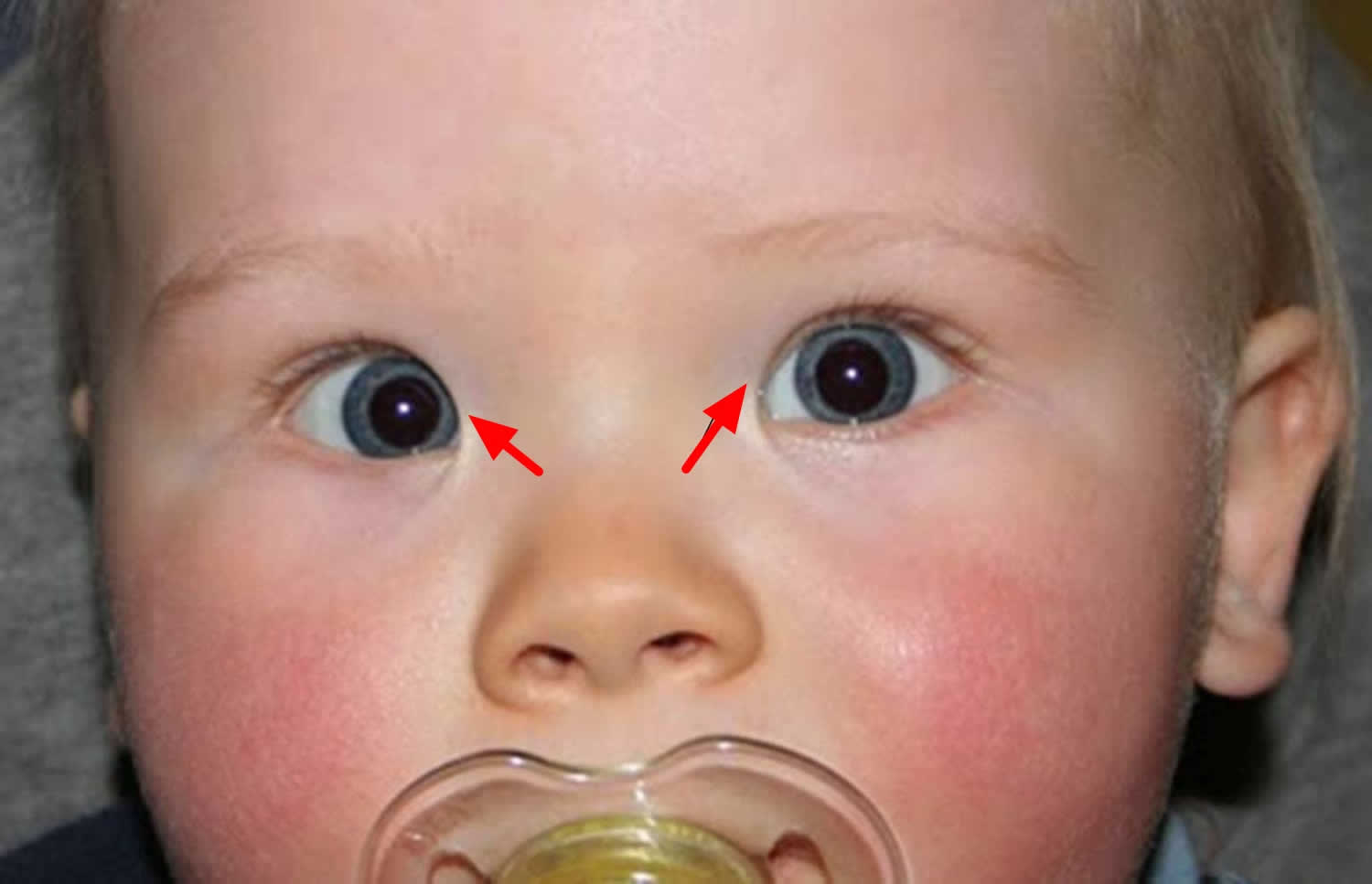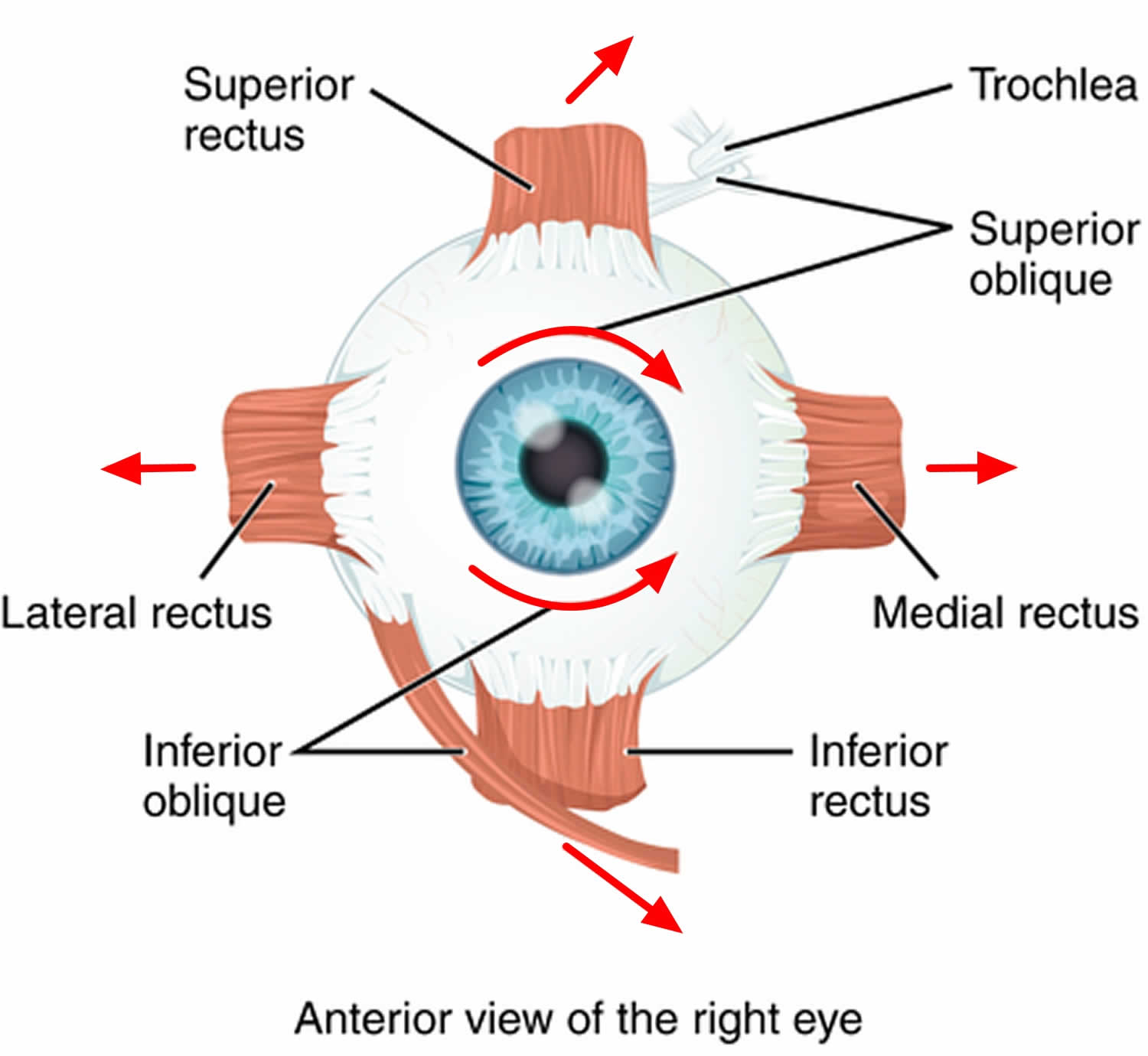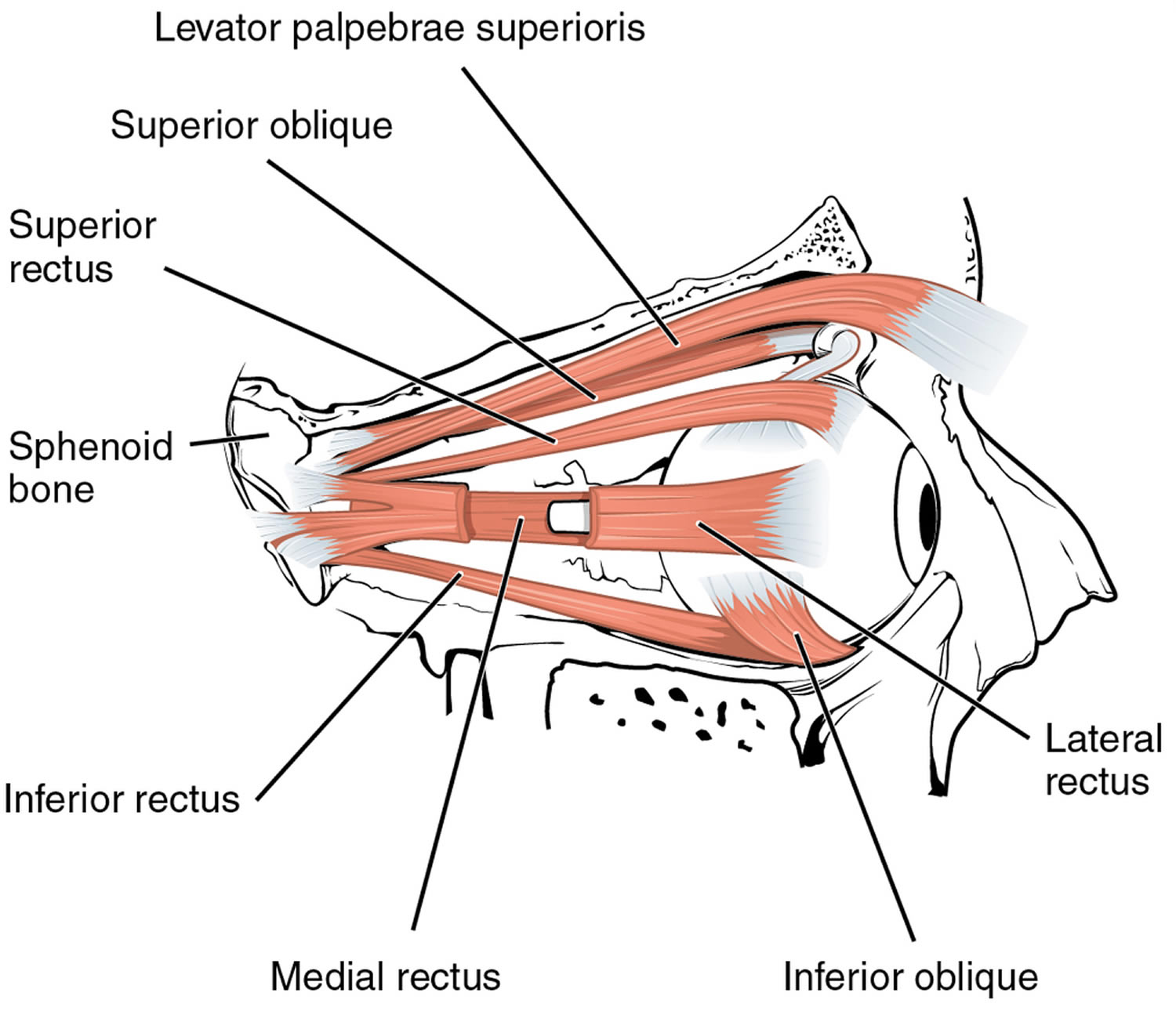Contents
- What is strabismus
- Strabismus prognosis
- The importance of strabismus in children
- Strabismus symptoms
- Types of strabismus
- Srabismus or crossed eyes causes
- Srabismus diagnosis
- Strabismus treatment
- Strabismus surgery
- Strabismus surgery in adults
- Who treats cross eyed in adults?
- Does my insurance cover the expense of this surgery?
- Is eye muscle surgery risky for adults?
- How successful is eye muscle surgery?
- How painful is strabismus surgery?
- Is hospitalization required for strabismus surgery?
- What age is considered “too old” to have eye muscle surgery?
What is strabismus
Strabismus commonly known “crossed eyes” or squint, as is a disorder in which both eyes do not line up in the same direction and the eyes point in different directions. Therefore, the eyes do not look at the same object at the same time. In strabismus one eye may look straight ahead, while the other eye turns inward, outward, upward, or downward. The eye turn may be constant or it may come and go (intermittent). Which eye is straight (and which is misaligned) may switch or alternate. Strabismus can lead to reduced vision and failure of the eyes to work properly together, including for 3D vision.
Strabismus is a common condition among children. About 4 percent of all children in the United States have strabismus 1. However, the prevalence figures for strabismus vary. The most recent screening study in Baltimore, USA, found a prevalence of manifest strabismus of 3.3% in Caucasian and 2.1% in African American children aged 6 to 71 months 2. Other population‐based studies have reported a prevalence of childhood strabismus between 0.01% and 3.1%, indicating that prevalence may vary greatly by ethnicity, age, type of strabismus and definitions used 3.
Strabismus can also occur later in life.
Infantile esotropia, where the eye turns inward, is a common type of strabismus in infants. Young children with esotropia cannot use their eyes together. Accommodative esotropia is the most common form of esotropia that occurs in children usually 2 years or older. In this type of strabismus, when the child focuses the eyes to see clearly, the eyes turn inward. This crossing may occur when focusing at a distance, up close or both.
Exotropia, or an outward-turning eye, is another common type of strabismus. This occurs most often when a child is focusing on distant objects. The exotropia may occur only from time to time, particularly when a child is daydreaming, ill or tired. Parents often notice that the child squints one eye in bright sunlight.
Strabismus can be primary or it can be a consequence of poor vision in one eye or of refractive errors. Strabismus may run in families; however, many people with strabismus have no relatives with the problem. Less commonly, strabismus can be caused by lesions affecting the oculomotor, trochlear or abducens nerve, or higher neurological pathways. Strabismus is rarely caused by developmental or traumatic defects of the extraocular muscles. Strabismus is a risk factor for the development of amblyopia during the ‘sensitive period’ of vision development. During this period, neural plasticity is greatest, and it begins to decline around the age of 6 years; clinical interventions are typically offered to children up to the age of 10 years. Screening programmes therefore attempt to identify children with amblyogenic risk factors before the age of 6 years, to allow remedial treatment.
A number of different tests can be used to screen for strabismus directly, by measuring the misalignment using corneal or fundus reflex tests; or indirectly, by measuring the level of vision in each eye (visual acuity); or by measuring 3D vision (stereopsis). The reference test to detect strabismus by trained professionals is the cover‒uncover test.
The goal of strabismus treatment is to improve eye alignment which allows for the eyes to better work together (binocular vision). Treatment may involve eye glasses, eye exercises, prism, and/ or eye muscle surgery. Problems associated with strabismus (including amblyopia, ptosis, and cataract) are usually treated prior to eye muscle surgery.
Eye misalignment can cause amblyopia in children. When the eyes are oriented in different directions, the brain receives 2 different visual images. The brain may ignore the image from the misaligned eye to avoid double vision, resulting in poor vision development of that eye. Also, an eye that sees poorly may become misaligned.
Who develops strabismus as a child?
Strabismus often occurs in children who are otherwise completely normal. However, disorders that affect the brain such as cerebral palsy, Down syndrome, hydrocephalus and brain tumor are more likely to develop strabismus.
What adult disorders cause strabismus?
Stroke or vascular problems may cause strabismus in adults. Trauma, neurological problems, and Graves disease (thyroid eye disorders) are other common causes of strabismus.
How does trauma cause strabismus?
Trauma can cause strabismus by 1) brain damage that impairs control of eye movement, 2) damage of the nerves that control eye movement and/or 3) damage of the eye muscles either directly or secondarily from trauma to the eye socket.
Strabismus prognosis
After surgery, the eyes may look straight, but vision problems can remain.
The child may still have reading problems in school. Adults may have a hard time driving. Vision may affect the ability to play sports.
In most cases, the problem can be corrected if identified and treated early. Permanent vision loss in one eye may occur if treatment is delayed. If amblyopia is not treated by about age 11, it is likely to be permanent. About one-third of children with strabismus will develop amblyopia.
Many children will get strabismus or amblyopia again. Therefore, so the child will need to be monitored closely.
The importance of strabismus in children
There are many subtypes of strabismus. In the context of childhood vision screening programmes, the most relevant distinction is between manifest and latent strabismus. Manifest strabismus is a risk factor for the development of amblyopia, the commonest vision disorder in children (prevalence 1.6% to 3.6% in Western societies) 4.
Amblyopia is a developmental anomaly of spatial vision, usually associated with strabismus, anisometropia or from deprivation early in life 5. Amblyopes have reduced visual acuity in one or both eyes, reduced contrast sensitivity and reduced contour integration. Clinical definitions of amblyopia are based on visual acuity only, taking into consideration the age of the child and progressive improvement of ‘normal visual acuity’ in the early years. Unilateral amblyopia is often defined as an interocular difference in best‐corrected visual acuity (of 2 logMAR or Snellen chart lines) 2, or best‐corrected visual acuity of 0.30 logMAR or worse in either eye 3. In 3‐year‐old children, bilateral amblyopia is suspected if best‐corrected visual acuity is worse than 0.40 logMAR in one eye and worse than 0.3 logMAR in the other eye in the presence of a bilateral amblyogenic risk factor. In 4‐year‐old children, the thresholds are 0.3 and 0.18 logMAR, respectively 6. Note a LogMAR chart or Snellen chart comprises rows of letters and is used by ophthalmologists, optometrists and vision scientists to estimate visual acuity.
Strabismus has a profound effect on stereopsis or perception of depth. Stereopsis normally develops within the first 3 to 4 months of age and reaches adult levels by the age of 24 to 36 months 7. Two studies reported that stereoacuity continues to develop beyond the age of 3 years, and may not yet be fully mature at 5 years or 12 years of age, respectively 8, 9. Normal adult stereopsis is 50 to 60 seconds of arc; some childhood vision screening programmes have used a threshold of 400 seconds of arc for “suspicion of amblyopia” 3. Reduced stereopsis adversely affects motor skills, particularly fine motor skills 10.
Significant misalignment can affect development (through unilateral reduced acuity, lack of depth perception and limitation of peripheral visual field), social interactions, and emotional well‐being. In children with infantile esotropia, surgical correction of strabismus leads to improvement in general development as measured by the Bayley scale 11. Scores on anxiety and depression scales such as the National Eye Institute Visual Functioning Questionnaire and the Hospital Anxiety and Depression Scale are significantly different from non‐strabismic children, and improve following surgical strabismus correction 12. Children with strabismus may have significantly greater conduct and externalising problems 13.
Strabismus can also be an indicator of severe eye and health problems. As it can indicate poor vision, it may in rare cases be the first sign of childhood cataract, glaucoma, or tumors of the eye, optic nerve, orbit or brain, such as retinoblastoma, glioma, or rhabdomyosarcoma.
Gross misalignment of the eyes is usually noticed by members of the family or carers. Small angles of deviation are not necessarily apparent. In young children, features such as a broad nasal bridge or certain lid positions and shape (epicanthus) can give rise to pseudostrabismus, i.e. a perception of strabismus when in fact the eyes are straight.
Strabismus symptoms
The main sign of strabismus is an eye that is not straight. Sometimes children will squint one eye in bright sunlight or tilt their head to use their eyes together.
Symptoms of strabismus may be present all the time, or may come and go. Symptoms can include:
- Crossed eyes
- Double vision
- Eyes that do not aim in the same direction
- Uncoordinated eye movements (eyes do not move together)
- Loss of vision or depth perception
It is important to note that children may never be aware of double vision. This is because amblyopia can develop quickly.
Pseudostrabismus
The eyes of infants often appear to be crossed, though actually they are not (see Figure 5). This condition is called pseudostrabismus. Young children often have a wide, flat nose and a fold of skin at the inner eyelid that can make eyes appear crossed. This appearance of pseudostrabismus may improve as the child grows. A child will not outgrow true strabismus. An ophthalmologist can distinguish true strabismus and pseudostrabismus.
Types of strabismus
There are many different types of strabismus. Strabismus is most commonly described by the direction of the eye misalignment. Common types of strabismus are esotropia, exotropia, and hypertropia.
Strabismus can also be described by its cause. Three of the twelve cranial nerves (III, IV, VI) are responsible for eye movement can be weak or palsied and cause strabismus. Some examples of this type of strabismus include third nerve (III) palsy and superior oblique (IV) palsy.
Special patterns of strabismus can have unique names such as Brown syndrome, and Duane syndrome.
Horizontal strabismus
Esotropia is inward turning of the eyes (aka “crossed eyes”). Types of esotropia include infantile esotropia, accommodative esotropia (related to farsightedness) and sixth nerve palsy. Exotropia is the term used to describe outward turning of the eyes (aka “wall-eyed”).
Vertical strabismus
The terms hypertropia and hypotropia are used to describe vertical misalignment. Hypertropia is an abnormal eye higher than the normal eye. Hypotropia is when the abnormal eye is lower than the normal eye. The terms can generally be interchanged depending upon which eye is being described.
Figure 1. Cross eyed baby (Esotropia or inward turning of one or both eyes in this baby it’s his left eye)
Figure 2. Strabismus in a child (Exotropia or outward-turning of one or both eyes in this girl it’s her right eye)
Figure 3. Strabismus in adult (Esotropia or inward-turning of one or both eyes in this woman it’s her right eye)
Figure 4. Strabismus in adult (Exotropia or outward-turning of one or both eyes in this woman it’s her left eye)
Figure 5. Pseudostrabismus (note a a fold of skin at the inner eyelid that can make eyes appear crossed)
Figure 6. Eye muscles (right eye) and the actions on the eyeball movement are shown by “red” arrows
Figure 7. Eye muscles anatomy
Srabismus or crossed eyes causes
Most strabismus is the result of an abnormality of the neuromuscular (including brain) control of eye movement. Scientists and doctors understanding of these control centers in the brain remains incomplete. Less commonly, a problem with the actual eye muscle may cause strabismus.
Six eye muscles are attached to outside of each eye and work “as a team”, controlling eye movement. In each eye, one muscle moves in the eye to the right, and one muscle moves the eye to the left. The other four muscles move it up or down and at an angle. This allows both eyes to focus on the same object.
To line up and focus both eyes on a single target, all of the muscles in each eye must be balanced and working together. In order for the eyes to move together, the eye muscles in both eyes must be coordinated. The brain controls these eye muscles.
In someone with strabismus, these eye muscles do not work together. As a result, one eye looks at one object, while the other eye turns in a different direction to focus on another object. Most of the time, the problem has to do with muscle control, and not with muscle strength.
With normal vision, both eyes aim at the same spot. The brain then combines the two pictures into a single, three-dimensional image. This three-dimensional image gives us depth perception.
When one eye is out of alignment, two different pictures are sent to the brain — one from each eye. This confuses the brain. In a young child, the brain learns to ignore (suppress) the image of the misaligned eye –the weaker eye and sees only the image from the straight or better-seeing eye. The child then loses depth perception.
If the strabismus is not treated, the eye that the brain ignores will never see well. This loss of vision is called amblyopia. Another name for amblyopia is “lazy eye.” Sometimes lazy eye is present first, and it causes strabismus.
In most children with strabismus, the cause is unknown. In more than half of these cases, the problem is present at or shortly after birth. This is called congenital strabismus.
Adults who develop strabismus often have double vision because their brains have already learned to receive images from both eyes and cannot ignore the image from the turned eye. A child generally does not see double.
Strabismus is especially common among children with disorders that may affect the brain, such as:
- Cerebral palsy;
- Down syndrome;
- Hydrocephalus;
- Brain tumors;
- Prematurity;
- Apert syndrome;
- Congenital rubella;
- Hemangioma near the eye during infancy;
- Incontinentia pigmenti syndrome;
- Noonan syndrome;
- Prader-Willi syndrome;
- Retinopathy of prematurity;
- Retinoblastoma;
- Traumatic brain injury;
- Trisomy 18.
A cataract or eye injury that affects vision can also cause strabismus. The vast majority of children with strabismus, however, have none of these problems. Many do have a family history of strabismus.
Strabismus that develops in adults can be caused by:
- Botulism
- Diabetes (causes a condition known as acquired paralytic strabismus)
- Graves disease
- Guillain-Barré syndrome
- Injury to the eye
- Shellfish poisoning
- Stroke
- Traumatic brain injury
- Vision loss from any eye disease or injury
A family history of strabismus is a risk factor. Farsightedness may be a contributing factor, often in children. Any other disease that causes vision loss may also cause strabismus.
Strabismic amblyopia
Good vision develops during childhood when both eyes have normal alignment. Strabismus may cause reduced vision, or amblyopia, in the misaligned eye.
The brain will pay attention to the image of the straight eye and ignore the image of the crossed eye. If the same eye is consistently ignored during early childhood, this misaligned eye may fail to develop good vision, or may even lose vision. Strabismic amblyopia occurs in approximately half of the children who have strabismus.
Amblyopia can be treated by patching or blurring the stronger eye to strengthen and improve vision in the weaker eye. If amblyopia is detected in the first few years of life, treatment is usually successful. If treatment is delayed, amblyopia may become permanent. As a rule, the earlier amblyopia is treated, the better the result for vision.
Srabismus diagnosis
Strabismus can be diagnosed during an eye exam. Your health care provider will do a physical exam. This exam includes a detailed examination of the eyes.
It is recommended that all children between 3 and 3½ years of age have their vision checked by their pediatrician, family practitioner or an individual trained in vision assessment of preschool children. Any child who fails this vision screening should then have a complete eye exam by an ophthalmologist.
If there is a family history of strabismus or amblyopia, or a family history of wearing thick eyeglasses, an ophthalmologist should check vision even earlier than age 3. After a complete eye examination, an ophthalmologist can recommend appropriate treatment.
The following tests will be done to determine how much the eyes are out of alignment.
- Corneal light reflex
- Cover/uncover test
- Retinal exam
- Standard ophthalmic exam
- Visual acuity
A brain and nervous system (neurological) exam will also be done.
How strabismus is measured
Eye misalignment or strabismus can be measured by several different methods. The measurements help guide the surgical and medical management of strabismus. The age, vision, and level of cooperation of the patient determine which method is most accurate and feasible.
Strabismus test
Light reflex test
Light reflex testing (called Hirschberg testing) involves directing a patient to look at a point of light held about three feet from the patient’s face. If the light reflexes are located in the same spot in each pupil, the reflexes are symmetric and the eyes are straight. If the light reflexes fall asymmetrically in the pupils, strabismus may be present. Hirschberg testing estimates the size of the strabismus by determining how far the deviated light reflex is off-center. Krimsky light reflex testing involves holding a prism over one eye to center the deviated light reflex until the reflexes are symmetric. The amount of the prism needed to center the deviated light reflex estimates the size of the eye misalignment. Light reflex testing is the least accurate way to measure strabismus but may be the only means possible in young children and in those with vision too poor to fixate on a target well.
The cover test
The cover test is another method to evaluate strabismus. All cover tests are carried out with the participant fixing on a target presented at distances of 6, 4 or 3 meters, and then at near distances (33 cm or 40 cm). In children, the distance target is often presented at 3 meters. In very young children the cover test is often only carried out at near fixation. While the patient is fixating on the target, one eye is covered. The uncovered eye is observed. If the uncovered eye is well aligned, it will not shift position when the other eye is covered. If the uncovered eye is misaligned, its position will change as the eye shifts to look at the target. For example, if the left eye is turned in, as the right eye is covered, the left eye will move outward to fixate on the target. If an eye is higher and the other eye is covered, the eye makes a downward movement when the other eye is covered.
The cover‒uncover test aims to detect strabismus, but not refractive errors, the other significant group of amblyogenic risk factors. Its accuracy as a standalone amblyopia screening test is therefore limited 6. Conversely, addition of the cover‒uncover test to vision screening tests increases the detection rate of strabismus 14. Vision screening programmes for children between 4 and 6 years traditionally use optotype testing to determine visual acuity (matching or naming letters or pictures), with or without a cover test to detect strabismus. In an effort to screen younger children to identify and treat problems early, these ‘manual’ screening programmes are increasingly supplemented or even replaced by the use of devices such as photorefractors, which also aim to provide information about refractive amblyogenic risk factors. The American Association of Pediatric Ophthalmology and Strabismus recently published updated recommendations for automated screening programmes 15. Screening methods were categorized into refractive and non‐refractive screening instruments. With regards to detection of strabismus, the American Association of Pediatric Ophthalmology and Strabismus recommends that non‐refractive screening devices should detect manifest strabismus greater than 8 prism dioptres in primary position 15. UK recommendations suggest that screening at age 4 to 5 years old provides the most accuracy and allows adequate time to treat 16.
What are prisms?
Prisms are clear, triangular shaped objects that bend light. When held in front of an eye, the prism shifts the pathway of light coming into the eye. The amount the light is shifted is measured in a unit called prism diopters. Prism diopter measurements describe theamount of eye misalignment.
What is prism and cover testing?
Prism and cover testing is used to determine the amount of strabismus present. A prism is held over the deviated eye and the eyes are alternately covered. When the proper strength of prism is place over the misaligned eye, there is no movement of the eyes when the cover is switched back and forth between the eyes. The eye alignment is measured in different gaze directions, on head tilts, and at near.
What is positive angle kappa?
A person can look like they have strabismus because of an off-center light reflex and still have straight eyes. They will not have movement of the eyes on cover testing. This is called angle kappa.
Why is it important to get good strabismus measurements?
Medical and surgical treatment of strabismus is based on the amount of eye misalignment present. Sometimes several office visits are needed to obtain accurate and complete strabismus measurements.
Strabismus treatment
Treatment for strabismus works to straighten the eyes and restore binocular (two-eyed) vision. In some cases of strabismus in children and adults, strabismus treatment consists of glasses, prisms, patching or blurring of one eye, botulinum toxin injections, or a combination of these treatments. Other times, eye muscle surgery is necessary to straighten the eyes or other eye surgery to remove a cataract. Patching or blurring the strong eye to improve amblyopia is often necessary.
Very young children with esotropia usually require surgery to realign the eyes.
For accommodative esotropia, glasses reduce the focusing effort and often straighten the eyes. Sometimes bifocals are needed for close work. If significant crossing of the eyes persists with the glasses, surgery may be required.
With exotropia, though glasses, exercises, patching or prisms may reduce or help control outward-turning of the eye in some children, surgery is often needed.
Strabismus surgery
During a strabismus surgery the ophthalmologist makes a small incision in the tissue covering the eye to reach the eye muscles. The eye muscles are detached from the wall of the eye and repositioned during the surgery, depending on which direction the eye is turning. Strabismus surgery involves sewing the eye muscle to the wall of the eye after altering the insertion position and/or the length of the muscle. Standard strabismus surgery (no adjustable suture) utilizes a permanent knot. Adjustable suture technique utilizes a bow-knot or slip-knot (temporary knot) in an accessible position. After surgery the eye alignment can be altered by adjusting the temporary knot. The adjustment is typically done while the patient is awake and the operated eye numbed.
It may be necessary to perform surgery on one or both eyes.
Recovery time is rapid. Children are usually able to resume their normal activities within a few days.
After surgery, glasses may still be required. In some cases, more than one surgery may be needed to straighten the eyes.
Preoperative tests for strabismus surgery
Before surgery, a specialized examination called a sensorimotor examination will be performed in the ophthalmologist’s office to assess the alignment of the eyes to determine which muscles are contributing to the strabismus and which muscles need to be altered (weakened, strengthened, or moved) to improve the alignment of the eyes. Prisms are used to measure the degree of the strabismus. These preoperative tests help guide the surgeon in determining the surgical plan. Often both eyes require surgery, even if only one is misaligned. Sometimes the exact surgical plan is determined based on findings at the time of the surgery, especially in reoperations.
Medications and strabismus surgery
Strabismus surgery rarely causes significant bleeding. However, some surgeons may suggest that you stop taking blood thinners, aspirin, aspirin-containing products, ibuprofen or certain nutritional supplements that can affect bleeding for a week before the surgery. Withholding these medications should also be discussed with the prescribing doctor to assess the risk of NOT taking the medication. If a pain medication is necessary during this time, acetaminophen (Tylenol) can be used as a substitute.
The strabismus surgery procedure
Strabismus surgery in children requires general anesthesia. Before surgery, a medication is often given to children to alleviate their anxiety of being separated from their parent. In adults, the procedure can be done with general or local anesthesia. Either way, the patient must fast for about eight hours before the procedure. For this reason, pediatric cases are often scheduled in the early morning.
The eyelids are gently held open with a lid speculum. A small opening is made through the conjunctiva (the mucous membrane surface of the eye) to access the muscle and no skin incisions are made. The surgeon then uses a delicate hook to isolate the eye muscle. The eye muscle is then weakened, strengthened or moved to change its action with dissolvable sutures. Most strabismus surgeries are less than one to two hours; however, the patient will be at the surgery center for several hours including pre-operative and post-operative care.
Adjustable sutures
In standard strabismus surgery, the muscle is weakened, strengthened or moved and a permanent knot is placed. In adults, there is the added advantage that an adjustable suture can be used. Instead of a permanent knot, a temporary knot is placed. After the surgery, with the patient awake, alignment can be reassessed, and if necessary, adjustments can be made before a permanent knot is placed to minimize the chance of an over-correction or under-correction. This is typically done the day of or the day after the surgery.
After surgery
Any patient that has surgery, whether under general anesthesia or local anesthesia with sedation, needs to be monitored after surgery. Children can return to school after two days. Adults should not drive the day of surgery or the day after and may need up to a week before returning to work. You may have double vision that can last hours to days or a week or more, rarely longer. Exercise caution with activities like driving if you have double vision.
Pain is minimal and usually over-the-counter medicines, such as ibuprofen (Motrin) or acetaminophen (Tylenol), and cool compresses are adequate. Adults and older children may need prescription pain medicine.
The main restriction after strabismus surgery is not swimming for two weeks.
The eye will be red for one to two weeks, rarely longer, especially if it is a reoperation.
After surgery:
- The eye will be red and slightly swollen for a couple of days. It should open fully within 2 days after surgery.
- The eye may be “scratchy” and sore when it moves. Acetaminophen (Tylenol) or a cool, damp washcloth placed gently over the eye can provide comfort.
- You or your child may have some blood-tinged discharge from the eye. The health care provider will prescribe eye ointment or eye drops to use after the surgery to help the eye heal and prevent infection.
- Your eyes or your child’s eye may be sensitive to light. Try dimming the lights, closing curtains or shades, or wearing sunglasses.
Try to avoid rubbing the eyes.
Double vision is common after surgery for adults and for children ages 6 and older. It is less common in younger children. Double vision most often goes away after the surgery. In adults, an adjustment is sometimes made to the position of the eye muscle to refine the results.
You or your child can go back to your normal activities and exercise within a few days after surgery. You can return to work, and your child may go back to school or day care a day or two after surgery.
Children who had the surgery can slowly go back to a regular diet. Many children feel a little sick to their stomach after surgery.
Most people do not have to wear a patch over their eye after this surgery, but some do.
You or your child should have a follow-up visit with the eye surgeon 1 to 2 weeks after the surgery.
When to call your doctor
Call your provider if you or your child has:
- A lasting low-grade fever, or a fever higher than 101°F (38.3°C)
- Increased swelling, pain, drainage, or bleeding from the eye
- An eye that is no longer straight, or is “way out of line.”
Potential risks of strabismus surgery
The chance of any serious complication from strabismus surgery that could affect the sight or well-being of the eye is exceedingly rare. However, there are risks with any surgery, including:
- Sore eyes;
- Redness;
- Residual misalignment;
- Double vision;
- Infection;
- Bleeding;
- Corneal abrasion;
- Decreased vision;
- Retinal detachment;
- Anesthesia-related complications.
How successful is strabismus surgery?
Strabismus surgery is a common procedure and most patients will see a large improvement in the alignment of their eyes after surgery. In some cases, you may need additional surgery or prism glasses to optimally align the eyes. Each case of strabismus is unique and should be discussed with your ophthalmologist to understand the goals and expectations of surgery.
What kind of anesthesia is used for strabismus surgery?
The type of anesthesia depends on patient age and health as well as patient preference. Most children undergo general anesthesia. Adults may have general anesthesia, conscious sedation or local anesthesia. The procedure is usually performed as an outpatient (patients come in and go home the same day).
What is an adjustable suture?
Strabismus surgery involves sewing the eye muscle to the wall of the eye after altering the insertion position and/or the length of the muscle. Standard strabismus surgery (no adjustable suture) utilizes a permanent knot. Adjustable suture technique utilizes a bow-knot or slip-knot (temporary knot) in an accessible position. After surgery the eye alignment can be altered by adjusting the temporary knot. The adjustment is typically done with the patient awake and the operated eye numbed, so adjustable suture surgery generally may only be offered to patients who are able to fully cooperate with the adjustment process.
What is a recession?
A recession weakens function by altering the attachment site on the eyeball. A suture is placed through the muscle at the attachment site to the eye. The muscle is detached from the surface of the eye and reattached further back from the front of the eye.
What is a resection?
A resection strengthens muscle function by reattaching a muscle to the eyeball at the original insertion site after a portion is removed. A suture is placed through the muscle at the intended new attachment site. The segment of muscle between the suture and the eyeball is removed and the shortened muscle is reattached to the eye.
Are the eyes red after strabismus surgery?
It is normal for the white part of the eyes to be red after surgery. It may take several weeks or occasionally months for the redness to disappear. The eyes are usually scratchy and are sore upon movement. The soreness usually improves after a few days.
Are patches or medicine used after surgery?
A patch is usually placed only if an adjustable suture is used. Some surgeons prescribe an antibiotic or combination antibiotic/steroid drop or ointment after surgery.
Strabismus surgery in adults
In adults, eye alignment surgery restores normal appearance and is considered reconstructive. There are many other benefits beyond restoring normal appearance: improved depth perception or binocular vision, improved visual fields, eliminating or minimizing double vision and improved social function — as eye contact is hugely important in human communication. It is important to discuss the goals and expectations of the surgery with your ophthalmologist.
During strabismus surgery, one or more of the eye muscles are strengthened, weakened or moved to a different position to improve alignment. Strabismus surgery is usually performed as an outpatient procedure and does not require an overnight hospital stay.
Who treats cross eyed in adults?
An ophthalmologist trained in strabismus is the most qualified specialist to treat adults with misaligned eyes. A specialist can be located in the directory of American Association for Pediatric Ophthalmology and Strabismus (https://secure.aapos.org/aapos/Find-a-Doctor), an organization of eye surgeons with special training in eye muscle problems. Your own eye doctor may also have a recommendation.
Many adults with strabismus wonder, “Why do I go to a pediatric eye specialist? I’m not a child anymore.” The answer is that misaligned eyes are common in children and ophthalmologists who care for children tend to have the most expertise in treating eye muscle conditions.
Does my insurance cover the expense of this surgery?
Eye muscle surgery is reconstructive (not cosmetic). In most cases, insurance will cover strabismus surgery in adults, however, one should check with their medical insurance carrier to determine coverage with their specific plan.
Is eye muscle surgery risky for adults?
Every surgical procedure has some risks. For strabismus surgery, the most common risks are residual misalignment of the eyes and double vision. Most double vision that occurs after strabismus surgery is temporary; however, persistent double vision is possible. Fortunately, the more serious risks are rare. These risks include anesthetic complications, infection, bleeding, retinal detachment, and decreased vision. Health risks vary with the general health of the individual. For those in poor health, surgery under local anesthesia instead of general anesthesia may be considered.
How successful is eye muscle surgery?
Most individuals have significant improvement in eye alignment with one surgery. Occasionally the surgery is only partially successful, or changes in ocular alignment may occur over time after initially successful surgery. Additional surgery may be indicated. Correction of residual double vision may be improved with the use of prism glasses.
How painful is strabismus surgery?
Discomfort after eye muscle surgery is usually not severe. Headache, pulling sensation with eye movement and foreign body sensation in the eye are the most common complaints. These symptoms typically last only several days. Over-the-counter pain medication often reduces the discomfort, although stronger medication is sometimes prescribed. Most patients return to full activity in several days. Some surgeons limit swimming and heavy physical activity for up to several weeks after surgery.
Is hospitalization required for strabismus surgery?
Eye alignment surgery is usually performed as an outpatient procedure although the need for hospitalization varies depending upon general health and surgeon preference. Following surgery, most individuals return to nearly all normal activities within several days.
What age is considered “too old” to have eye muscle surgery?
Eyes can be straightened at any age and should be considered as a treatment option if it is likely to improve symptoms and enhance quality of life. In most cases, eye muscle surgery is a successful, safe, and effective treatment for strabismus in adults of all ages. The good news is that it is never too late for surgery. Even patients in their 90’s have benefited from surgical correction.
I am embarrassed by my misaligned eyes and avoid looking people in the eye. It seems to me that people are distracted by my wandering eye, causing problems with social interaction and difficulty getting the job I want. Can this really be true?
Yes. Recent studies confirm these observations. Misaligned eyes can hinder social interaction, self-confidence and employment opportunities. All individuals deserve straight eyes if possible.
- What Is Strabismus? https://www.aao.org/eye-health/diseases/what-is-strabismus[↩]
- Friedman DS, Repka MX, Katz J, Giordano L, Ibironke J, Hawse P, et al. Prevalence of amblyopia and strabismus in white and African American children aged 6 through 71 months the Baltimore Pediatric Eye Disease Study. Ophthalmology 2009;116(11):2128‐34.[↩][↩]
- Traboulsi EI, Cimino H, Mash C, Wilson R, Crowe S, Lewis H. Vision First, a program to detect and treat eye diseases in young children: the first four years. Transactions of the American Ophthalmological Society 2008;106:179‐85.[↩][↩][↩]
- Simons K. Preschool vision screening: rationale, methodology and outcome. Survey of Ophthalmology 1996;41(1):3‐30.[↩]
- Ciuffreda KJ, Levi DM, Selenow A. Amblyopia: Basic and Clinical Aspects. Boston: Butterworth Heinemann, 1991.[↩]
- Schmidt P, Maguire M, Dobson V, Quinn G, Ciner E, Cyert L, et al. Comparison of preschool vision screening tests as administered by licensed eye care professionals in the Vision In Preschoolers Study. Ophthalmology 2004;111(4):637‐50.[↩][↩]
- Takai Y, Sato M, Tan R, Hirai T. Development of stereoscopic acuity: longitudinal study using a computer‐based random‐dot stereo test. Japanese Journal of Ophthalmology 2005;49(1):1‐5.[↩]
- Simons K. Stereoacuity norms in young children. Archives of Ophthalmology 1981;99(3):439‐45.[↩]
- Walraven J, Janzen P. TNO stereopsis test as an aid to the prevention of amblyopia. Ophthalmic & Physiological Optics 1993;13(4):350‐6.[↩]
- O’Connor AR, Birch EE, Anderson S, Draper H. The functional significance of stereopsis. Investigative Ophthalmology & Visual Science 2010;51(4):2019‐23.[↩]
- Rogers GL, Chazan S, Fellows R, Tsou BH. Strabismus surgery and its effect upon infant development in congenital esotropia. Ophthalmology 1982;89(5):479‐83.[↩]
- Chai Y, Shao Y, Lin S, Xiong KY, Chen WS, Li YY, et al. Vision‐related quality of life and emotional impact in children with strabismus: a prospective study. Journal of International Medical Research 2009;37(4):1108‐14.[↩]
- Koklanis K, Abel LA, Aroni R. Psychosocial impact of amblyopia and its treatment: a multidisciplinary study. Clinical and Experimental Ophthalmology 2006;34(8):743‐50.[↩]
- Vision in Preschoolers Study Group. Does assessing eye alignment along with refractive error or visual acuity increase sensitivity for detection of strabismus in preschool vision screening?. Investigative Ophthalmology & Visual Science 2007;48(7):3115‐25.[↩]
- Donahue SP, Arthur B, Neely DE, Arnold RW, Silbert D, Ruben JB, et al. Guidelines for automated preschool vision screening: a 10‐year, evidence‐based update. Journal of AAPOS 2013;17(1):4‐8.[↩][↩]
- Solebo AL, Cumebrland PM, Rahi JS. Whole‐population vision screening in children aged 4‐5 years to detect amblyopia. Lancet 2015;385(9984):2308‐19.[↩]
